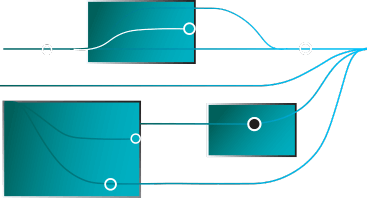Building a Future-Proof Test Automation Architecture

Enterprise test automation faces a critical challenge, as maintenance costs consume up to 50% of the overall test automation budget (World Quality Report by Capgemini). Organizations dedicate 30% to 50% of their testing resources to maintaining and updating test scripts. When API changes occur, teams are forced to rewrite hundreds of integration tests weekly. Modern test automation architecture transforms this maintenance burden into a competitive advantage through intelligent design that adapts to change rather than breaking from it.
- What is Test Automation Architecture?
- The Rising Cost of Obsolete Test Automation Architecture
- Essential Principles of Future-Proof Test Automation Architecture
- Designing for Change: Best Practices for Evolving Architectures
- Strategic Implementation Roadmap for Test Automation Architecture
- The Competitive Edge of Future-Ready Test Automation Architecture
- Transform Your Test Automation Architecture with ACCELQ
What is Test Automation Architecture?
Test automation architecture is the structural design that determines how your tests adapt and stay resilient as your application grows.
At its core, test automation architecture defines how test components interact, share data, and adapt to changes. Think of it as the blueprint for a building. Scaling test coverage becomes risky and inefficient without the right architecture, eventually leading to a brittle, unsustainable test suite.
The Difference Between Test Automation Framework Architecture and Testing Tools
Many teams confuse buying testing tools with building test architecture. Tools execute tests; architecture orchestrates how those tests integrate, function, and evolve within your ecosystem.

Testing tools are the execution engines:
- ACCELQ for unified codeless automation
- Selenium WebDriver for browser automation
- Appium for mobile testing
- RestAssured for API validation
- JMeter for performance testing
Test automation framework architecture is the blueprint:
- Layer separation, ensuring UI changes don’t break business logic tests
- Data abstraction allows tests to run across environments
- Component reusability reduces maintenance overhead
- Technology-agnostic design survives tool migrations
How Architecture for Automation in Software Testing Affects Project Success?
Poor architecture compounds technical debt exponentially. According to Gartner’s research on automated software testing adoption, 16% of organizations cite high maintenance costs as a key challenge in test automation adoption, while 19% struggle with product complexities that make testing difficult to automate.
Consider these real-world impacts:
Well-Architected Systems:
- Add new test types in hours, not weeks
- Survive major UI overhauls with minimal changes
- Support parallel execution across platforms
- Enable non-technical team members to contribute
Poorly Architected Systems:
- Require test rewrites for minor UI changes
- Break mysteriously after framework updates
- Create bottlenecks with knowledge silos
- Generate false failures that erode trust
The Rising Cost of Obsolete Test Automation Architecture
Legacy test architectures slowly strangle productivity. Teams often don’t recognize inefficiencies until more time is spent fixing tests than delivering new features.
Measuring Technical Debt in Your Software Test Automation Architecture
Technical debt in test automation has real, measurable costs:
Maintenance Ratio: Time fixing tests ÷ Time creating tests
- Healthy: < 20%
- Concerning: 20-40%
- Critical: > 40%
False Failure Rate: False failures ÷ Total failures
- Target: < 5%
- Problem: 5-15%
- Crisis: > 15%
Warning Signs Your Generic Test Automation Architecture Won’t Scale
Five indicators signal impending architectural collapse:
- Technology Lock-in: Tests only work with specific tool versions
- Platform Rigidity: Can’t adapt tests to new platforms
- Data Dependency Hell: Tests fail in production environments
- Maintenance Multiplication: Simple changes require widespread updates
- Knowledge Silos: Only certain team members can maintain tests
Essential Principles of Future-Proof Test Automation Architecture
Building architecture that withstands technological evolution requires embracing core principles and prioritizing adaptability over immediate convenience.
Abstraction Layers: Building Flexibility into Your Test Automation Framework Architecture
Abstraction layers act as shock absorbers between tests and volatile implementation details. Every UI change sends ripples through your entire test suite without proper abstraction.
Each abstraction level multiplies maintenance efficiency. A financial services firm reduced test maintenance by 85% after implementing proper abstraction layers through ACCELQ’s AI-powered testing.
Design Patterns That Strengthen Your Software Test Automation Architecture
Three architectural patterns prove particularly resilient:
- Strategy Pattern for Multi-Platform Execution: Instead of separate tests per platform, implement adaptive strategies
- Repository Pattern for Test Data Management: Decouple test data from logic to survive schema changes
- Observer Pattern for Test Result Processing: Enable flexible reporting without modifying core logic
Designing for Change: Best Practices for Evolving Architectures
Creating evolutionary architecture requires deliberate design decisions prioritizing long-term adaptability over short-term convenience.
Building a Generic Test Automation Architecture for Cross-Platform Testing
Generic architectures transcend platform boundaries through intelligent abstraction. Instead of creating separate frameworks for web, mobile, API, and desktop testing, unified architectures that adapt to context are created.
This approach enabled a retail company using ACCELQ’s unified testing platform to reuse 80% of their test logic across web, iOS, and Android platforms.
Future-Proofing Your Test Data Strategy Within Your Architecture
Test data strategies often become the weak point of otherwise robust architectures. Future-proof data architectures embrace these principles:
- Data as a Service: Dynamically create required data states
- Synthetic Data Generation: Generate data on demand
- Environment Abstraction: Tests remain environment-agnostic
Strategic Implementation Roadmap for Test Automation Architecture
Transforming test architecture while maintaining daily operations requires careful planning and a phased execution approach.
Phased Adoption of a New Test Automation Framework Architecture
Phase 1: Foundation (Months 1-2)
- Establish architectural principles
- Create proof-of-concept
- Define success metrics
Phase 2: Pilot Implementation (Months 3-4)
- Migrate 10-15% of tests
- Implement core abstractions
- Gather feedback
Phase 3: Controlled Expansion (Months 5-8)
- Migrate 50% of critical paths
- Establish parallel execution
- Train team
Phase 4: Full Migration (Months 9-12)
- Complete migration
- Optimize performance
- Document lessons
Measuring Architecture for Automation in Software Testing Effectiveness
Architectural effectiveness shows measurable improvements:
| Metric | Well-Architected Systems | Impact |
|---|---|---|
| Velocity Metrics | ||
| New test creation time | 50-70% faster | 3x productivity gain |
| Test modification time | 60-80% faster | Rapid feature delivery |
| Stability Metrics | ||
| Framework upgrade impact | <5% tests affected | 90% less maintenance |
| False failure rate | <2% | Trusted test results |
Key Insight: Modern test architectures deliver measurable improvements – teams save 30-50% of testing resources previously spent on maintenance, enabling focus on innovation rather than upkeep
Velocity Metrics:
- New test creation time: 50-70% decrease
- Test modification time: 60-80% decrease
Stability Metrics:
- Framework upgrade impact: < 5% tests affected
- False positive rate: < 2%
Building Team Capabilities to Support Your Software Test Automation Architecture
Modern test architectures demand new skills. Democratizing test automation through architecture enables broader participation. Companies implementing no-code automation platforms report a 5-10x increase in team members who can create and maintain tests, transforming quality from a bottleneck to a shared responsibility.
- Begin with a focused pilot project demonstrating measurable ROI
- Develop organizational expertise through hands-on implementation
- Optimize testing processes to leverage hyperautomation capabilities
- Expand implementation systematically across testing functions
- Implement continuous assessment and improvement processes
The Competitive Edge of Future-Ready Test Automation Architecture
Organizations with future-ready architectures release features 3x faster, experience 75% fewer production defects, and spend 60% less on testing infrastructure.
The advantages compound over time through speed to market, quality confidence, and resource optimization. ACCELQ’s cloud-native testing platform enables these benefits without the traditional architectural overhead.
Do more with Test Automation
Discover more ways to add ‘low-code no-code‘ test automation in your workflows

Transform Your Test Automation Architecture with ACCELQ
Manual test script creation consumes 70% of QA effort in traditional frameworks. ACCELQ eliminates this overhead through intelligent test generation and self-healing capabilities.
ACCELQ transforms test automation architecture through:
- No-code test creation enabling 5x faster development
- AI-driven element recognition survives 95% of UI changes
- Unified platform supporting all testing types
- Built-in abstraction layers eliminate maintenance
- Cloud-native architecture scales seamlessly
Organizations using ACCELQ report 7.5x productivity gains and a 72% reduction in maintenance efforts.
Discover how ACCELQ can revolutionize your test automation architecture → Schedule a Demo
Geosley Andrades
Director, Product Evangelist at ACCELQ
Geosley is a Test Automation Evangelist and Community builder at ACCELQ. Being passionate about continuous learning, Geosley helps ACCELQ with innovative solutions to transform test automation to be simpler, more reliable, and sustainable for the real world.
You Might Also Like:
 Test Data Management: Complete Guide
Test Data Management: Complete Guide
Test Data Management: Complete Guide
 The Top 7 UI Test Automation Best Practices
The Top 7 UI Test Automation Best Practices
The Top 7 UI Test Automation Best Practices
 Master Automation Faster: Why ACCELQ is a Game-Changer?
Master Automation Faster: Why ACCELQ is a Game-Changer?
































